Posts Tagged mulch
How Mulching Can Benefit Your Garden
In seeking to maintain or improve the growth and health of trees, plants and flowers in gardens there are several practical, techniques that gardeners can apply. One approach that has proven to be very effective in helping to promote the health of gardens is mulching.
Mulching can be used for Multiple Purposes
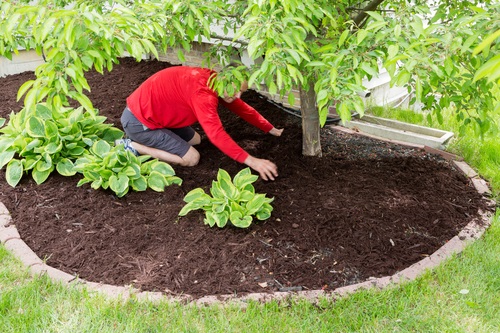
Mulching refers to the practice of applying a layer of material to the surface of soil. Mainly it is used to improve soil health and fertility, retain soil moisture and reduce weed growth. Mulching can be utilized in several different, areas including vegetable gardens, flower beds and surrounding landscapes. It is so effective that it allows gardeners to spend less time plucking up weeds, watering gardens and fighting pests.
Apart from its main uses mulch can also be used to lend additional support to plants by helping to stabilize them as well as help to enhance the visual appeal of gardens.
Types of Mulch Gardeners can Utilize when Mulching
When mulching gardens there are two basic kinds of mulch that gardeners can use these are organic or inorganic mulches. Generally organic mulches consist of numerous materials including straw, grass clippings, chopped leaves, shredded bark, wood chips and sawdust and inorganic mulches are mainly comprised of gravel, stones, geotextiles and black plastic.
Nevertheless both types of mulch can be used to deter weed growth and improve soil quality however with organic mulches soil is improved gradually as the organic material decomposes while inorganic mulches don’t.
Important Tips to Consider
If mulching to combat weeds there are a few things that people should keep in mind if it is to be done properly and effectively. Firstly it is recommended that mulch be laid down over soil that has already been weeded and secondly it should be laid down thick enough to discourage the reappearance of new weeds.
Considering this the thickness of mulch placed over soil should range around 4- 6 inches though a 2- 3 inch layer normally suffices in areas that have more shade and weed growth is not as prevalent.
Another very essential tip gardeners can utilize when mulching is the addition of nitrogen products to soil. Products like blood meal or fish meal can be used and should be applied before the mulch is laid as organic mulches usually have a low nitrogen content and this can help to increase nitrogen levels in soil so that plants get the desired nutrients.
Nevertheless one of the most important things that gardeners should take care to remember when mulching is how they place the mulch. When laying down mulch it should be kept no less than an inch away from crowns and stems of plants. This is mainly because wet mulch resting against the stems of flowers and vegetables can cause rot. Therefore it would be wise to ensure that mulch is placed at the appropriate distance to prevent this from happening.
Need Help with Mulching Your Garden?
If you don’t know what to do or need help mulching a large garden area don’t hesitate to give us a call at DK Landscaping Inc. at: (707) 280-3632 we’d be happy to come and give you a hand.
Our services are prompt and professional and our prices affordable. Here at DK Landscaping we strive to offer the highest quality landscaping services to clients so give us a call today or you can check out our website: dklandscaping.com to have a look at the services we offer.
Why You Should Be Mulching Your Garden
“The Love Of Gardening Is A Seed Once Sown That Never Dies” – Gertrude Jekyll
You ask why mulching? Well here’s a logical answer to that question, you see at the beginning of each growing season it’s typical for most landscapes and gardens to carry a rough and lifeless look. Rain and snow from last winter certainly seem to take a toll on a landscape that was thriving only a few months before.
Despite this, you put on your gloves and get started with preparing your garden for the upcoming planting season. Perhaps you’ve cleared the garden beds of last year’s leaf litter, laid down fresh soil and already planted a number of new plants.
Sounds promising but there’s still one thing you haven’t done to ensure the health and longevity of this season’s plantings and if you didn’t know, mulching is a popular gardening technique which basically uses certain organic and inorganic materials to cover soil.
Learn How Mulching Can Help Gardeners Achieve Appeal
Over time, mulching has proven to be a very effective gardening technique that lends help, protection and nourishment to blooms. In fact, gardeners who utilize mulch are guaranteed to see fantastic results throughout their garden.
Despite popular belief, mulching a garden goes way beyond modern, garden aesthetics and is more than just a colorful addition that complements a home’s exterior.
If you take a trip to your local garden center you’ll see that there are plenty of garden-bed coverage options available, that can benefit your garden one way or the other, however the big question is are they as effective as mulch?
The answer to that may very well be no since mulch can serve many purposes in gardens as opposed to using a number of different gardening products to achieve the same results. Firstly, because most forms of mulch are organic, they tend to help plants absorb and retain moisture, as well as to slow the process of evaporation from the soil.
Secondly, mulching is an excellent way to mitigate overwatering gardens by absorbing a great deal of the water that would otherwise waterlog the soil. Aside from this, when temperatures begin to soar in the summer, mulching plays an integral role in the health and growth of plants by maintaining the right amount of moisture when it gets too heated.
So in essence mulching is the perfect way to maintain consistent moisture levels in gardens when it’s heated since too much water can be just as bad as not enough water.
Mulch Offers Protection From The Elements So You Have Longer Lasting Blooms
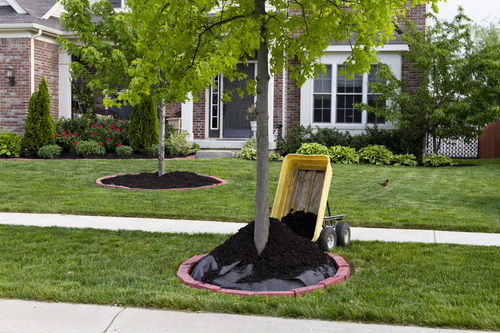
Any gardener knows that it’s inevitable for a garden to endure extreme conditions when the seasons change each year, so finding effective ways to offer plants protection is always something that gardeners have to take into consideration.
Again, mulching can serve as the ideal solution since it acts as a formidable shield against the elements. On extremely hot or windy days, mulch can effectively serve as insulation to prevent the evaporation of water from plants and during cold periods, it captures heat from the sun to help regulate the temperature of the soil. Additionally, it offers exceptional support to plants and stability to the soil, to help plants to stay firmly rooted, where gardens are situated in extremely windy regions.
Can You Say Weed Control? – Say Goodbye To Menacing Weeds With Mulching
Weeds are a gardener’s worst nightmare and though they can’t be avoided completely if left to grow, they can choke and hinder the growth of plants. Covering soil in mulch pretty much deprives weed seeds of the light they need for germination and since it also prevents weed seeds from coming in contact with the soil, they are not able to fully take root.
Mulching? – Take A Look At The Most Popular Types Of Mulch Gardeners Use
With all this talk about mulch and the exceptional benefits it offers you’re probably wondering which materials out there are best to use for mulching. Well, to be honest mulch can come in many forms but it is said to be more beneficial when used in an organic form.
Here are some examples of natural materials that can be used for mulching. These include:
- Wood Chips
- Grass and Straw
- Pine Needles
- Bark Nuggets
- Compost
- Leaf Litter
Organic mulches have been discovered to not only offer protection and heat to plants when they break down but they also provide essential nutrients and improve soil quality as well.
Some Gardeners Find Inorganic Mulches Work Well
Gardeners who do vegetable gardening or are into agriculture, tend to utilize these particular types of mulch more since apart from their typical benefits, they also serve a unique purpose. Some of these include:
- Gravel
- Stones
- Geotextiles
- Black Plastic.
Uniquely, inorganic mulches serve as an effective form of pest management but along with this they help prevent root rot, allow for increased air permeability and permit easier rainfall penetration to plant roots.
So depending on the gardening environment, the choice of mulch used is usually determined by what is being grown and the existing conditions within a particular garden.
Since this article wouldn’t be complete without making mention to how mulch is applied in a garden, we’ll get straight into the juicy details on the right way to apply mulch.
No More Mistakes – Mulching The Right Way Brings The Best Results
Though many people may be under the impression that mulching is nothing more than spreading a bit of grass or wood chips at the top of garden beds, FYI it’s not. Mulching is actually a very beneficial gardening technique should it be done accurately.
To give you a better idea of how you should really be applying mulch, here is a definitive guide to mulching the correct way. Follow these steps and you’re sure to see mind-blowing results.
- Firstly, you will have to make an honest determination of how much mulch you will need to buy to get adequate coverage throughout your garden, especially if it is to be laid down nice and thick. ( Be careful not to add too much mulch as you can suffocate the plants)
- Once you’ve purchased your mulch and ready to go, your next step would be to give your soil a good turning and apply any product nutrients such as fish meal or blood meal before you lay down your mulch.
- For gardeners who are mulching to combat weeds, it is important that you must first remember to weed the soil beforehand. This is essential if mulching is to be done properly and for it to be effective and secondly it should be laid down thick enough to discourage the reappearance of new weeds.
- Now it’s time to lay down your mulch. When using organic mulches like shredded bark, wood chips or leaf litter, these should be laid down about 3 inches deep and shredded hardwood spread no more than 2 to 3 inches deep. For mulch consisting of coarse bark nuggets 3 to 5 inches deep should suffice and for landscapes that include trees, these can be mulched at about 8 inches off the ground.
- Although the laying of mulch is fairly easy, HOW it is placed is another thing and if not done correctly, can hamper plants. Therefore, when laying mulch down, it should be kept no less than an inch away from the crowns and stems of plants. This is mainly because wet mulch resting against the stems of flowers and vegetables can cause rot. So without further ado, it’s time to get started.
What’s your favorite type of mulch? “Personally, I’m a black mulch, shredded wood kind of gardener.” – Garden Enthusiast.
Do you need help mulching? Don’t know what mulch you should get? Call us at DK Landscaping we will gladly help you with mulching your garden. We also provide expert advice on the best mulch to use for your garden and even help you pick it out at the store.
We can mulch your entire landscape and take all the stress off your hands. Contact us at (707) 280-3632 to schedule your appointment or you can also visit our website dklandscaping.com for more information on our services.
Effective Garden Tips Part 1 – Use Mulch For A Healthy Garden
In an effort to keep gardens healthy and vibrant gardeners utilize a variety of tips and techniques that serve to nurture, protect and maintain their plants and vegetables. Among these techniques the use of mulch has been found to be one of the easiest and more common methods used to promote a healthy and consistent environment in gardens.
Generally mulching can be utilized in several different areas including vegetable gardens, flower beds, plant pots and walkway areas however it is mainly used to help in the elimination of annoying weeds and helps soil to retain moisture. Additionally it also helps to protect and stabilize plants, trees and crops.
Different Types Of Mulch
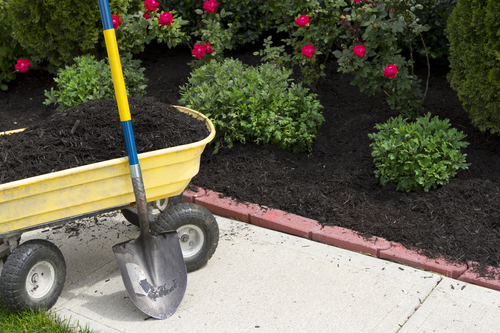
Basically there are two kinds of mulch that can be used in gardens and these are organic or inorganic mulch. Usually organic mulches consist of several different materials including chopped leaves, straw, grass clippings, wood chips, sawdust and shredded bark while inorganic mulches are mainly comprised of gravel, stones, black plastic, and geotextiles.
Nevertheless regardless of the type applied to a garden its use is mainly the same which is to discourage weed growth and improve soil quality however organic mulches gradually improve soil as they decompose while inorganic mulches don’t.
How To Mulch
Gardeners mulch gardens for a variety of reasons but depending on the reason there are certain tips that should be applied if this technique is to be done properly and is to work effectively.
Mulch To Be Rid Of Weeds
For instance if mulch is being used to eliminate weeds there are two important tips gardeners should remember if it is to be executed accurately. The first tip would be to place the it on soil that has already been weeded and the second would be to lay it down on soil thick enough to discourage new weeds from reappearing.
Normally the thickness of mulch should range from around 4 – 6 inches when applied however in areas where weed growth is not as common a layer of mulch measuring 2-3 inches should be enough to do the trick.
Mulching Reduces The Need To Water Gardens
As a great way to keep soil cool and help plants retain moisture in dry conditions gardeners can again apply mulch to their gardens. It also reduces the need to constantly water gardens and what’s more is that in cold conditions mulching also provides considerable protection to prevent the freezing and thawing of the soil as the gradual decomposition of materials only generate minimal heat.
Additional Tips To Consider
When using organic mulch it is important to remember that they carry a low nitrogen content therefore gardeners should first fertilize soil with a high-nitrogen product such as blood meal or fish meal to increase nitrogen levels in the soil before applying mulch.
Gardeners should also remember to keep mulch about an inch away from crowns and stems to prevent them from becoming choked or damaged and should also be careful not to allow wet mulch to rests against the stems of flowers and vegetables as it can cause them to rot.
So protect and maintain the ideal environment in gardens by considering mulching it will save you time and promote a healthy environment for your plants or vegetables.
Need Help In Your Garden?
If you don’t know what to do or need help mulching your garden don’t hesitate to give us a call at DK Landscaping Inc. at: (707) 217-6508 we’d be happy to come and give you a hand. You can also check out our website: dklandscaping.com to have a look at the services we offer.
Picking the Best Landscape Maintenance Services
 Landscape maintenance goes well beyond regular lawn care in ways that might surprise you. For starters, if you’ve ever wondered why local parks and upscale homes look so great year round, the reason is probably regular landscaping.
Landscape maintenance goes well beyond regular lawn care in ways that might surprise you. For starters, if you’ve ever wondered why local parks and upscale homes look so great year round, the reason is probably regular landscaping.
From pruning and lawn care to a reliable irrigation schedule and weed-reduction services, a landscape maintenance company remains an affordable way to turn heads and quickly increase your home’s curb appeal.
Myriad Benefits of Landscape Maintenance
Contracting out your landscape maintenance services, for instance, can increase your home’s resale value by over ten percent virtually overnight. A landscape maintenance company can also assist property managers lease space and offer a more professional face to the public.
A landscape maintenance company can work to expand on what’s already great about your home’s lawn and garden as well. Services like lawn edging, mulching and irrigation significantly enhance your home’s curb appeal and can give you more reasons to take daily pride in your home.
Pruning your home’s bushes and snipping overhanging branches are additional ways that a landscape maintenance company gives value back to homeowners. In short, a landscape maintenance company that can help you get your lawn, garden and walkway in shape is a win-win for you and your neighbors.
Unique Services Available to Homeowners
If you’re somewhat fuzzy on the nuts and bolts of irrigation, mulching and the right watering schedule for your home’s soil and climate, then you’re just like millions of homeowners from around the country.
A landscape maintenance company, fortunately, has decades of experience testing for proper pH levels, installing and/or maintaining sprinkler systems, and removing weeds or unsightly overgrowth from your yard.
If a landscape maintenance company determines, for example, that your pH levels are out of whack, then a lime treatment can be used to get your lawn back on its feet.
This is all a huge boon for homeowners looking for a little extra time on the weekends as well as property managers who want to spend less time worrying and more time leasing space.
Interestingly, some studies even show that properly placed trees and plants can lower your HVAC costs by as much as one-fifth. This might seem shocking until you consider the heat gain during the hottest months – or the heating costs squandered to poor ventilation – due to a lack of shade around your home or commercial property.
From relatively simple jobs like mowing and mulching to larger projects like aeration and irrigation, a full-service landscape maintenance company is truly a one-stop-shop for all of your home’s landscaping needs.
Hiring a Landscape Maintenance Company
Although you can probably find dozens of companies with mowers and leaf blowers in your area willing to provide simple services, a landscape maintenance company can provide more sophisticated services (e.g., irrigation) that bring experience and professional know-how to bear.
Many states even require that landscape maintenance companies have licenses before offering their services to the public. This coupled with the fact that a full-service landscape maintenance company can help with pest and weed control, sprinkler systems and pH detection makes this an easy call.
To reiterate, a landscape maintenance company can help homeowners and property managers in crucial ways – improving curb appeal, enhancing your home’s energy efficiency, and eliminating pests and weeds.
If you’ve always wanted a lusher lawn, contact the professionals at Xeriscape today for more information about a host of maintenance, repair and irrigation services.
Surviving Winter Drought
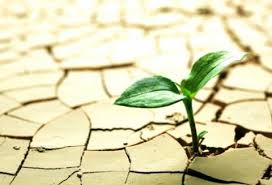
Since our “official” rainy season began October 2013, Sonoma County county has seen only two inches of rain bringing us the driest season that anyone can remember in the North Bay. This has resulted in another difficult growing season for farmers and gardeners. Many cities are already implementing water restrictions and encouraging citizens to voluntarily engage in water conservation.
So what can the home gardener do to use less water, enjoy the garden more, and help the environment? Here are DK Landscapings 10 easy tips:
1) Check for Leaks and Repair– Leaks can occur for many reasons and in many parts of watering systems. Review sites weekly for “weeping” valves, sprinklers, hose bibs, etc.
2) Choose Hand Watering – over automatic irrigation when possible. The more time you spend with the plants, the more they benefit from the attention, the sooner they establish, and the less water they need.
3) Avoid Runoff – To gauge the time to run off, turn on a sprinkler zone and track the time until water runoff begins. That is the amount of run time that should be entered into the controller followed by at least 30 minutes before the next cycle.
4) Inspect and Tune-Up your Sprinkler System Monthly – Adjust your sprinkler heads to prevent water draining off your lawn and down the gutter. Reduce sprinkler run-time, and don’t be a gutter flooder.
5) Get to Know Your Meter – Your water meter is an important conservation tool. It not only measures the amount of water you use, but can also tell you if there is a leak in your plumbing.
6) Incorporate Shrubs and Trees into the garden. Once established, these deep-rooted plants require far less water than shallow-rooted perennials and annuals.
7) Learn Soil/Plant Relationships – Landscape plantings need healthy soil to grow and thrive. The more healthy a plant is, the more stress it can tolerate. Knowing soil type will help with irrigation scheduling. Being able to identify plants will indicate how to best care for the landscape as a whole. In times of drought, reducing fertilizing and pruning can help plants survive with a reduced amount of water.
8) Water – between midnight and 6:00 a.m. to reduce water loss from evaporation and wind. Water your lawn and garden in 2 or 3 short cycles rather than one long one. Watering to a depth of 4″ to 6” will encourage deeper healthier roots and allow the plants to go without water for longer periods of time.
9) Reduce the size of water features (like a pond, stream, or water fountain) to conserve water while still attracting birds and wildlife.
10) Use a Broom, not a hose, to clean your driveway, deck, or patio. Washing a sidewalk or driveway with a hose uses about 50 gallons of water every 5 minutes.
DK Landscaping specializes in water conversation, water efficiency and water management and makes it a priority when serving our clients and our community every season of the year. It is a primary consideration in everything we do, from the selection of plants to the design of irrigation systems and the equipment choices we make.
Every drop matters, and each one of us counts.
Goodbye Summer. Hello Autumn!

Autumn is officially here in Sonoma County! When we think of the season, we think of vibrant foilage, crunchy leaves, the smell of crisp sweet air, pumpkins, hot apple cider and Halloween. But as we get further into the season, the sunlight begins to wane, the nights are chillier, our trees are more bare and the landscape looks tired. It’s easy for us at this point to hang up our boots, turn our backs on our landscape and take up shelter for warmth. But the reality is that Autumn is the most ideal time to tend to our lawns and prepare it for the harsh winter ahead to ensure it’s in the best of health for a springier spring. Here are DK Landscaping’s top tips to winterize your landscape:
Mow & Mulch
Mow your lawn into the fall and avoid removing more than one-third of the leaf blades with each cut. Return grass clippings and back to the soil for added lawn nutrients and use tree leaf compost to nourish plants. That will allow more sunlight to reach the crown of the grass, and there will be less leaf to turn brown during the winter.
Aerate & Prune
Aerating is a lawn process that puts small holes into the ground to allow air, water, and nutrients to transcend into the ground and allows you to remove unwanted weeds from manifesting. Help your lawn breathe through fall core aeration to strengthen roots and to prepare for a hardy spring workout. Conduct corrective pruning of trees and shrubs in fall to enhance plant appearance and vigor, and thin rather than top-shear and overgrown shrubs and flowering trees to preserve their overall shape.
Rake those Leaves
Don’t wait until all the leaves have fallen from the trees to start raking. If you do, the leaves will become wet from rain and morning dew, stick together and form an impenetrable mat that, if left there, will suffocate the grass and breed fungal diseases.
Feed for the Winter
A good fall feeding gives roots of lawns, trees and shrubs the energy needed to prepare for a healthy spring green revival. Keep fertilizer on target to prevent run-off and sweep fertilizer granules that may reach pavement back onto your lawn.
DK Landscaping is your Sonoma County lawn experts. We have all the tools, experience and are backed by 10 years trusted guaranteed service. Give us a call so we can help make your lawn beautiful! For a full list of services, please contact Kathy Lee at (707) 280-3632 or contact us by email, davidmunlee@aol.com.
What’s Growing On?
Flowers always make people better, happier, and more helpful; they are sunshine, food and medicine for the soul. ~ Luther Burbank
Around this time of year I start to get spring fever, that urge to go outside and dig around and plant something. Even if you naturally don’t have a green thumb, flower gardening allows you to use your artistic playful side, being outside in nature soothes your soul, and a beautiful flower garden increases the curb appeal of your home. One of the first things a flower gardener learns is that there is not one date when it is best to plant all flowers.
This group of exotic and tropical summer bloomers can be planted right now and all through April in most of the country; planting times for colder regions of the North are typically from April to June, depending on the bulb.

Cannas are a personal favorite for their showy, tropical-like flowers and vibrantly-colored or variegated banana-like leaves. Dahlias offer numerous flower types from dazzling daisies, to showy pom poms, to show-stopping colorful blooms. Other note-worthy spring-planted bulbs include gladiolus, windflower (Anemone coronaria), pineapple lily (Eucomis), freesia, summer hyacinth (Galtonia), begonia, red hot poker (Kniphofia), Asiatic and Oriental lilies (Lilium), and Aztec lily (Sprekelia). 
So start by finding an empty spot in your yard that you see frequently that could use some color. If you don’t have an open bed, remove a patch of lawn in front of shrubs. Measure the size and note what time of day and how long the sun shines on that spot. Consider the following when designing your garden: hardiness, color, fragrance, height, time of bloom and size of plant. Do you want to attract hummingbirds, butterflies, or song birds? Or are you trying to create a work of beauty just for you? Next, visit your favorite full service nursery. They will help you pick out the right flowers for that spot. And be sure to ask about fertilizer, weed preventer and mulch.
Here are three easy ways to start planting your summer bulbs:
- Start with bulbs that are plump, firm and feel heavy for their size. Prep the soil by working a complete fertilizer into the entire bed or bottom of planting holes.
- Arrange the bulbs in groups or random clusters, then plant them at the depth recommended on the package with the pointed side or sprouting side facing up.
- Cover the bulbs with soil mixed with compost and keep the soil moist to slightly moist from planting until the foliage of the mature plant dies back.
One of the biggest things about gardening is the upkeep, depending on the plants and flowers you choose this can require little maintenance or high maintenance. Be realistic about your daily scheduled and how much effort you are willing to put in weekly to maintain your gardens.
Work all day? Busy with kids? Then opt for low maintenance plants that need very little maintenance or call DK Landscaping to keep your yard looking beautiful all year long! (707) 280-3632.
Springing Forward
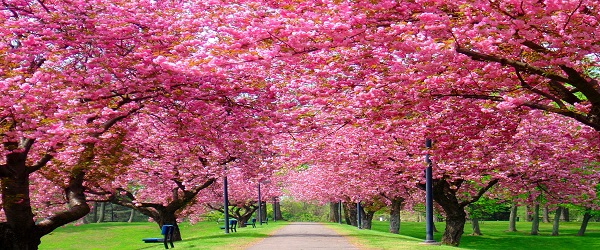
Spring is an exciting and one of the most beautiful times of the year. The days are becoming longer, the weather is getting warmer, you awake to birds chirping in the morning, and spring blooms and lush green plants come alive in your landscape.
After a long winter, your lawn and gardens may be looking a big ragged and dreary. So before you pull out your lawn furniture from storage, get in the “spring spirit” by getting your yard looking spectacular. Help your lawn, trees and shrubs get off to a healthy growing season with these six luscious landscaping tips:
1. ASSESS YOUR TOOLS: Check, maintain, sharpen and repair your landscaping tools for a smooth spring and summer experience. This includes your lawnmower, weeding/pruning tools, rake and edger.
2. CLEAN UP: Clean out dead leaves, branches, trash or anything else that could impair your garden and lawn’s growth. Prune
3. WEED CONTROL: Uproot any existing weeds you find out of flower beds and check your lawn for any weed growth, whether they’re leftover stalks from last year or brand-new shoots. Once weeds are clear, DK Landscaping recommends spending between 10-15 minutes a few times per week to prevent new weed growth in your garden.
4. FERTILIZE: Make sure your early spring fertilizer has less nitrogen and more phosphorus to promote strong roots. Be sure to keep fertilizer on target to prevent run-off, and sweep fertilizer granules that may reach pavement back onto your lawn. Give your lawn a slow, steady watering about once a week, but adjust depending upon rainfall, grass and soil type in your area.
5. MULCH: A fresh layer of mulch can take any flower bed from drab and dreary to beautiful. DK Landscaping suggests applying four inches of mulch over the top soil, which will help retain moisture and prevent growth of those pesky weeds.
6. IRRIGATION: Check your in-ground sprinkler system and make sure all your sprinklers are working properly. Remove any overgrown grass that may have covered up any part of the pop-up heads. Check the sprinkler heads for cracking and breakage from last year and have them replaced if needed.
It’s the perfect time in Northern California to gather up tools, slide into your boots, pull on your garden gloves, and enjoy that first breath of spring.
DK Landscaping specializes in landscape maintenance, irrigation, clean-up and colorscape in Sonoma County. Contact Kathy or David Lee for more information and a consultation on your landscaping (707) 280-3632.
Protecting Your Landscape From Frost Bite
The temperatures in Northern California are beginning to drop which means winter will be before us, before we know it. Night time temperatures that get down to freezing and below will damage some trees and plants if you don’t take precautions against frost. These low temperatures can begin late November and continue through February and beyond.
DK Landscaping helps you prepare your landscape and provides tips to protect your delicate plants from frost bite.
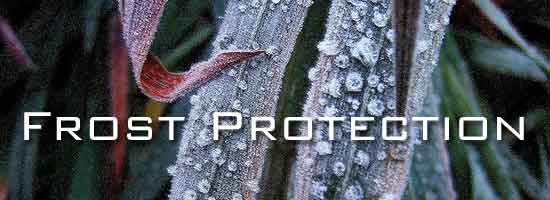
WINTERIZE
Fall is prime time to clean up your landscaping and remove the dead landscaping before it gets too cold. Removing dead plants can also stop the growth and spread of fungi that could infect your plants’ new growth in the spring.
PLANT
Planting trees and shrubs in the fall is a an optimal time before the first frost arrives and best time to take advantage on some great end of the season deals. Planting in the fall gives roots plenty of time to become established before the next growing season begins. Not only will you get to enjoy the changing leaves for a brief time, you will also put less stress on your young trees because of the cooler weather and rain conditions fall offers.
MULCH
Mulching can be a great first step in preparing for winter’s frost. If you are unfamiliar with mulching, check out our previous blog post called Mulch About Fall. There are many benefits to mulching your lawn and plants, especially before winter. Mulching in the fall can help protect your plant’s roots as well as help them retain moisture during the cold, dry winter.
Just a few preparations for winter can guarantee that your landscaping will come back fresher than ever in the spring.
For more information on the care of your landscape, please contact David or Kathy Lee from DK Landscaping (707) 280-3632.
Mulch About Fall

Did you know that mulching in the fall is just as important as it is in the spring and summer months? We mulch in the spring and summer months to suppress weeds, retain moisture and feed and warm the soil. However, when the temperatures begin to drop and the ground freezes, root systems can be exposed. The primary reason for winter mulching is to protect our plants from the harsh conditions of winter freezes, thaws and winds. Mulch acts as an insulator to balance the temperature creating a warm, heavy blanket of protection.
Neglecting to mulch in the fall can be damaging to your plants in the spring season. And the cost of mulching is nothing compared to the cost of replacing some of your favorite trees and shrubs. It also adds a beautiful aesthetic to your landscape in the winter months.
Using fall leaves as organic mulch is a great benefit to your landscape. They will break down over the course of the wintertime and create a layer of nutrients for your plants to draw from. Adding a layer of leaves over your perennials will help regulate soil temperature of the wintertime, as well as give new shoots a protective blanket as they enter the world in the spring.
DK Landscaping offers mulching installation in Sonoma County. Contact us for more information on the benefits of fall mulching (707) 280-3632.





